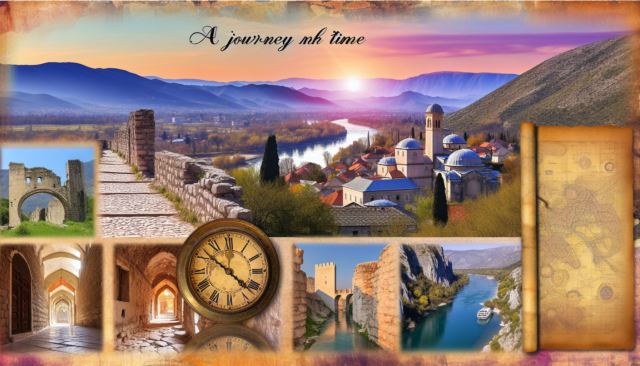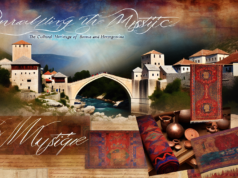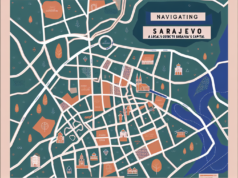
A Journey Through Time: Exploring the Rich History of Bosnia and Herzegovina
Nestled in the heart of Southeast Europe, Bosnia and Herzegovina is a nation that bears the marks of a tantalizingly complex history. Over the centuries, this small yet profoundly diverse country has been a crossroads of culture, religion, and political intrigue. From ancient times to the modern era, Bosnia and Herzegovina’s journey through time reveals layers of influences that have shaped its identity today.
Ancient Roots
The history of Bosnia and Herzegovina stretches back to prehistoric times, with evidence of human settlement found in sites like the cave of Badanj. The Illyrians, a group of ancient tribes, were among the earliest recorded inhabitants of the region. By the 2nd century BC, the Romans conquered the area and integrated it into their vast empire, establishing cities like Salona and Aquileia. The remnants of Roman architecture and engineering still resonate within the ruins of ancient cities, echoing the sophistication of past civilizations.
The Medieval Era
With the decline of Roman power, Bosnia and Herzegovina entered a period of fragmentation. During the middle ages, the region witnessed the rise of the Kingdom of Bosnia, which attained significant independence and influence by the 14th century. Under King Tvrtko I, the kingdom expanded its territory and engaged in both trade and conflict with neighboring states. This period also saw the spread of Christianity, primarily Roman Catholicism, intertwined with local customs and beliefs.
However, the medieval landscape of Bosnia and Herzegovina was marked not only by its Catholic roots but also by the presence of Orthodox Christianity and Islam. By the 15th century, the Ottoman Empire capitalized on regional instability and began its conquest of the Balkans. Bosnia was fully integrated into the Ottoman realm by 1463, marking a profound transformation in the cultural and religious fabric of the area.
Ottoman Influence and Cultural Flourishing
Under Ottoman rule, Bosnia and Herzegovina underwent significant changes. The Islamic faith began to take root, with many citizens converting to Islam, resulting in the emergence of a diverse society characterized by coexisting Catholic, Orthodox, and Muslim communities. The Ottomans left an indelible mark on the cultural landscape; cities like Sarajevo flourished, becoming centers of trade and religion adorned with beautiful mosques, bridges, and Ottoman-era architecture.
The period also laid the groundwork for a unique Bosnian identity, shaped by a fusion of Eastern and Western influences. The famous traveler Evliya Çelebi described Sarajevo as a "Jerusalem of the West," a testament to its rich tapestry of cultural coexistence.
Austro-Hungarian Rule
In the late 19th century, the dynamic changed as the Austro-Hungarian Empire took control of Bosnia and Herzegovina in 1878. This era brought modernization, with the introduction of railways, education reforms, and urban planning. However, it also stirred nationalist sentiments among the various ethnic groups, particularly among Bosniak Muslims, Serbs, and Croats.
The assassination of Archduke Franz Ferdinand in Sarajevo in 1914 set off a chain of events leading to World War I, marking a pivotal moment that would forever alter the course of history in the region. The war’s aftermath saw the dissolution of empires and the emergence of new geopolitical realities.
The Interwar Period and World War II
Following World War I, Bosnia and Herzegovina became part of the newly formed Kingdom of Serbs, Croats, and Slovenes, later known as Yugoslavia. The interwar years were marked by political instability, economic challenges, and rising ethnic tensions. With the invasion of Axis powers during World War II, the region became a battleground for fierce conflict, witnessing atrocities under the rule of fascist collaborators and resistance movements.
The Yugoslav Era
After the war, Yugoslavia emerged as a socialist federation, and Bosnia and Herzegovina was granted significant autonomy. The post-war period allowed for a degree of economic growth and cultural renaissance, with an emphasis on unity among different ethnic groups. However, increasing nationalist fervor in the 1980s threatened this delicate balance.
The collapse of Yugoslavia in the early 1990s led to a brutal war (1992-1995) characterized by ethnic cleansing and genocide, most notably in Srebrenica. The conflict resulted in profound human suffering, dislocation, and the solidification of ethnic divisions.
A Path to Reconciliation
The Dayton Agreement of 1995 brought an end to the conflict and established a complex political structure aimed at sharing power among the country’s various ethnic groups. Despite the agreement, Bosnia and Herzegovina remains a region of tensions and challenges as it navigates the difficulties of political plurality, economic development, and social cohesion.
Efforts toward reconciliation and rebuilding continue, with many grassroots organizations working tirelessly to promote dialogue and understanding among different communities. The vibrant cultural heritage of Bosnia and Herzegovina—from its music and cuisine to its art—stands as a testament to resilience and the hope for a brighter future.
Conclusion
Bosnia and Herzegovina’s history is a captivating journey through time that reflects the interplay of different cultures, religions, and ideologies. From its ancient roots to contemporary complexities, the nation has endured, adapted, and evolved through moments of glory and strife. Today, as it embraces a future shaped by its rich past, Bosnia and Herzegovina remains a compelling chapter in the narrative of European history, a testament to both its struggles and its potential for growth and unity.













